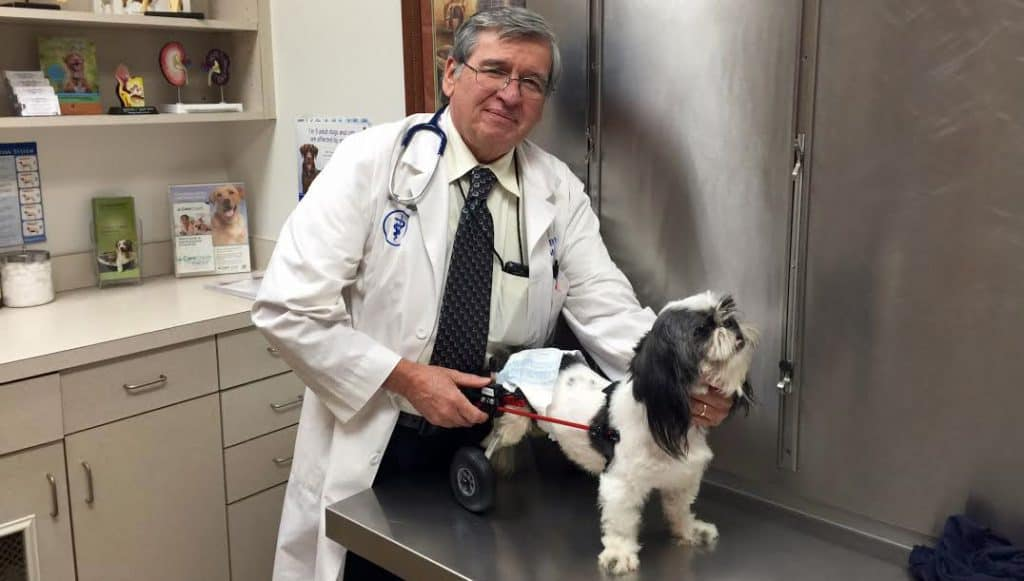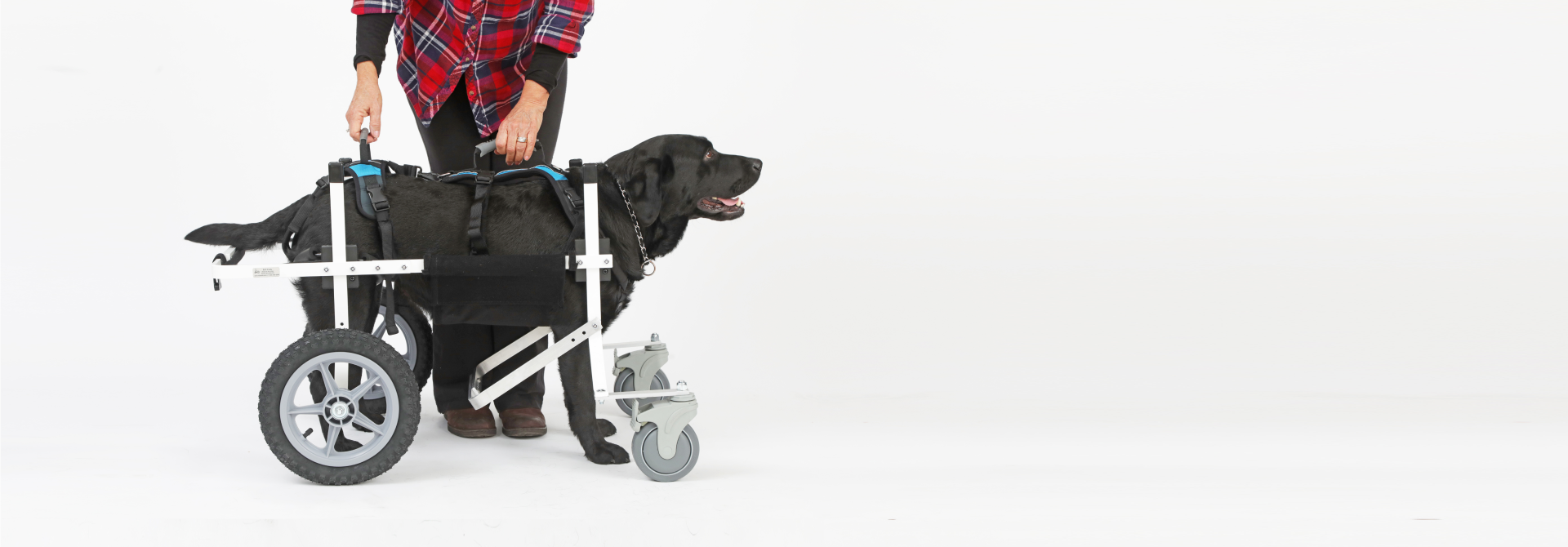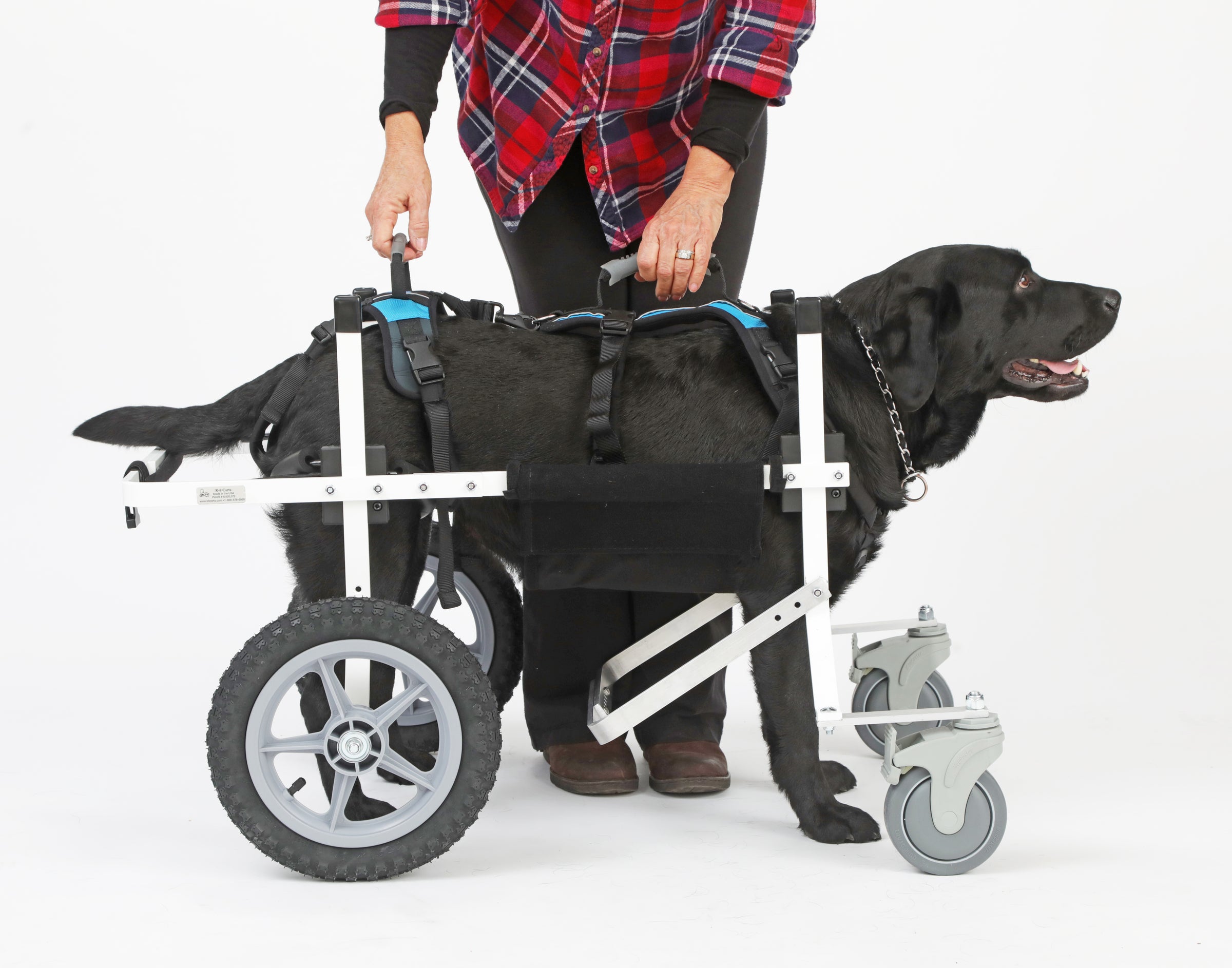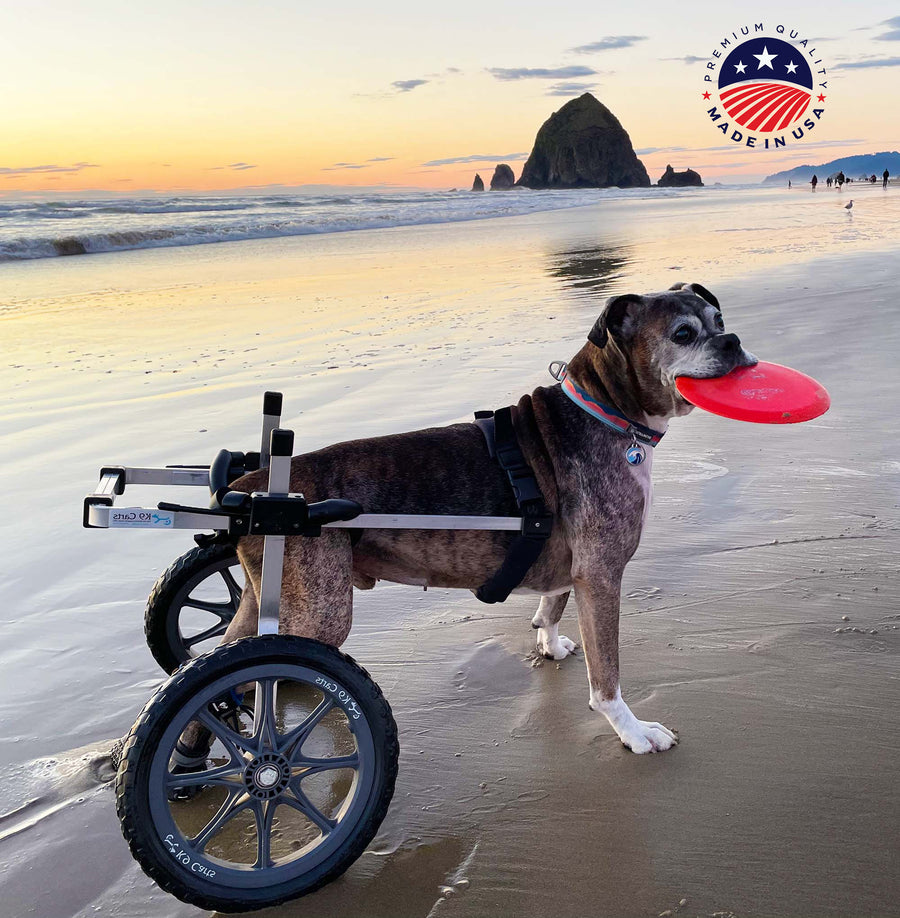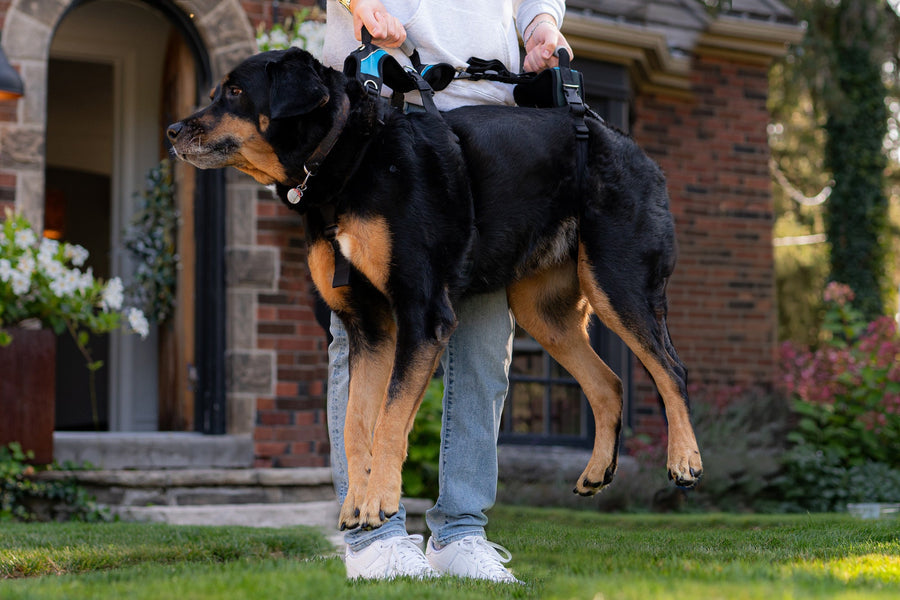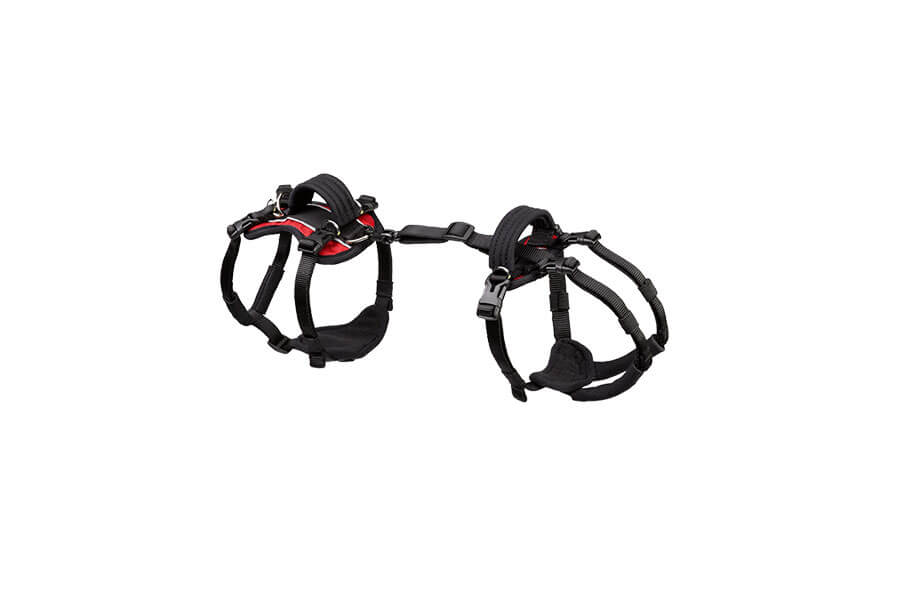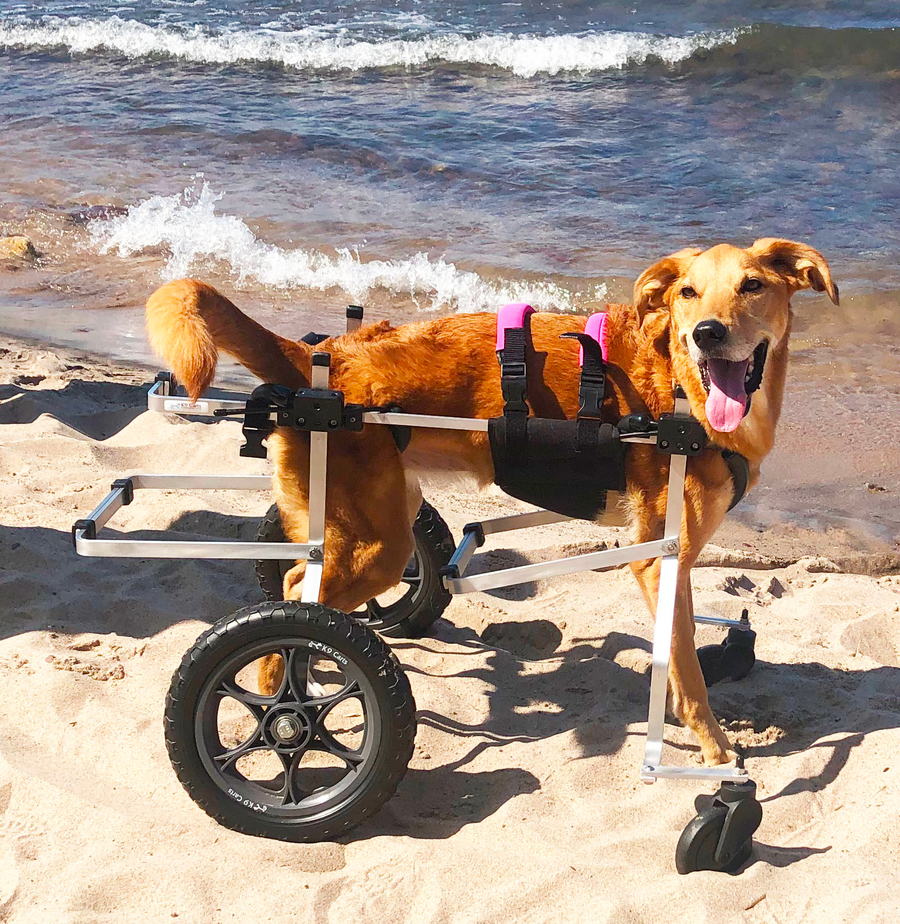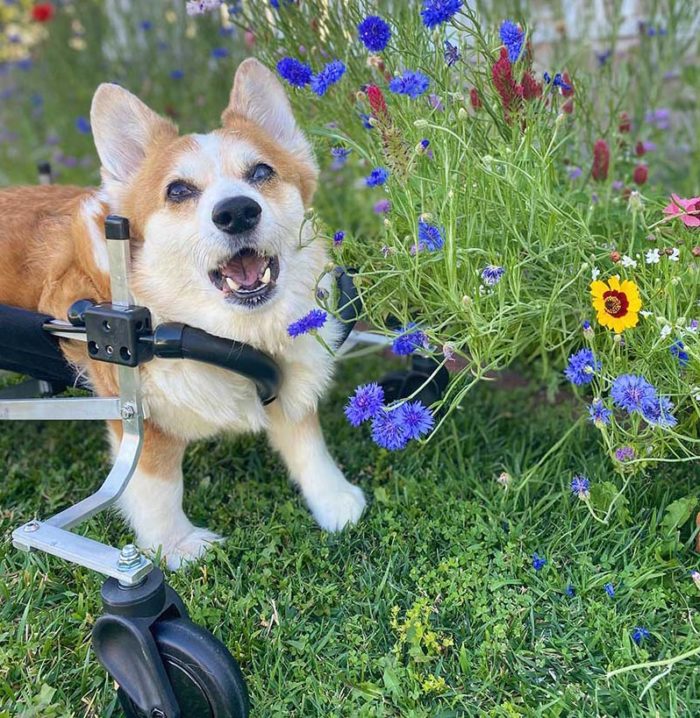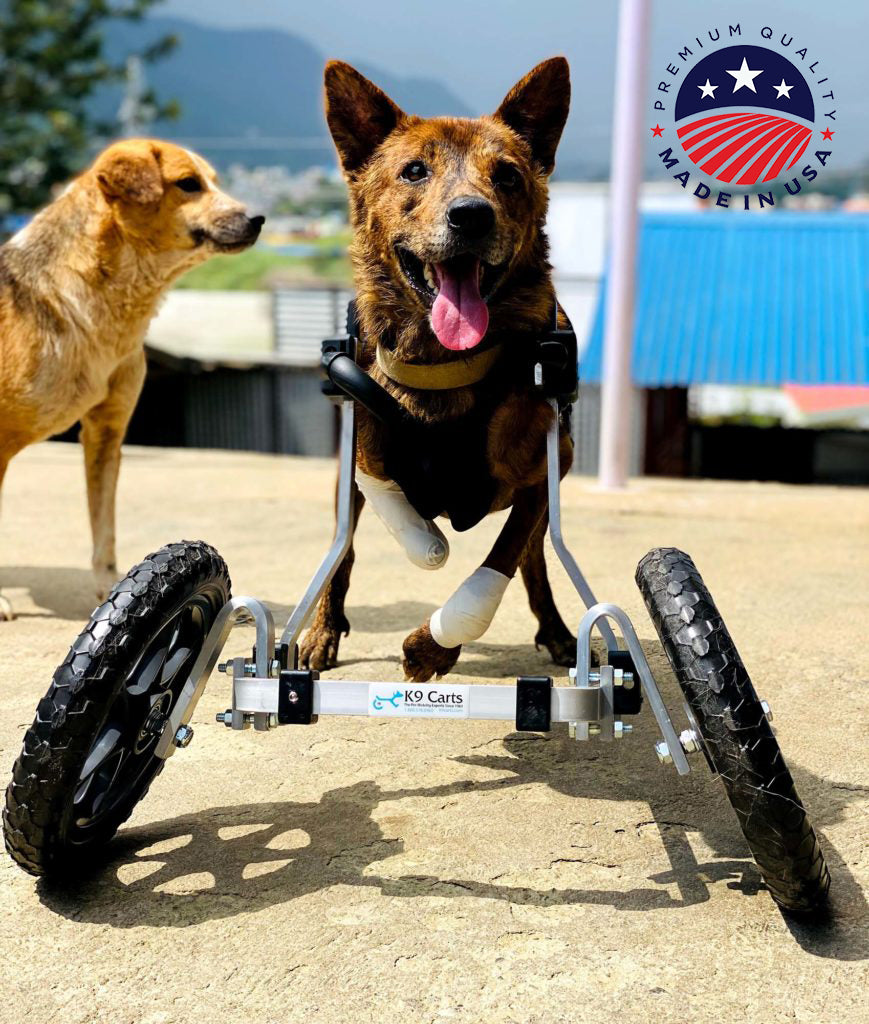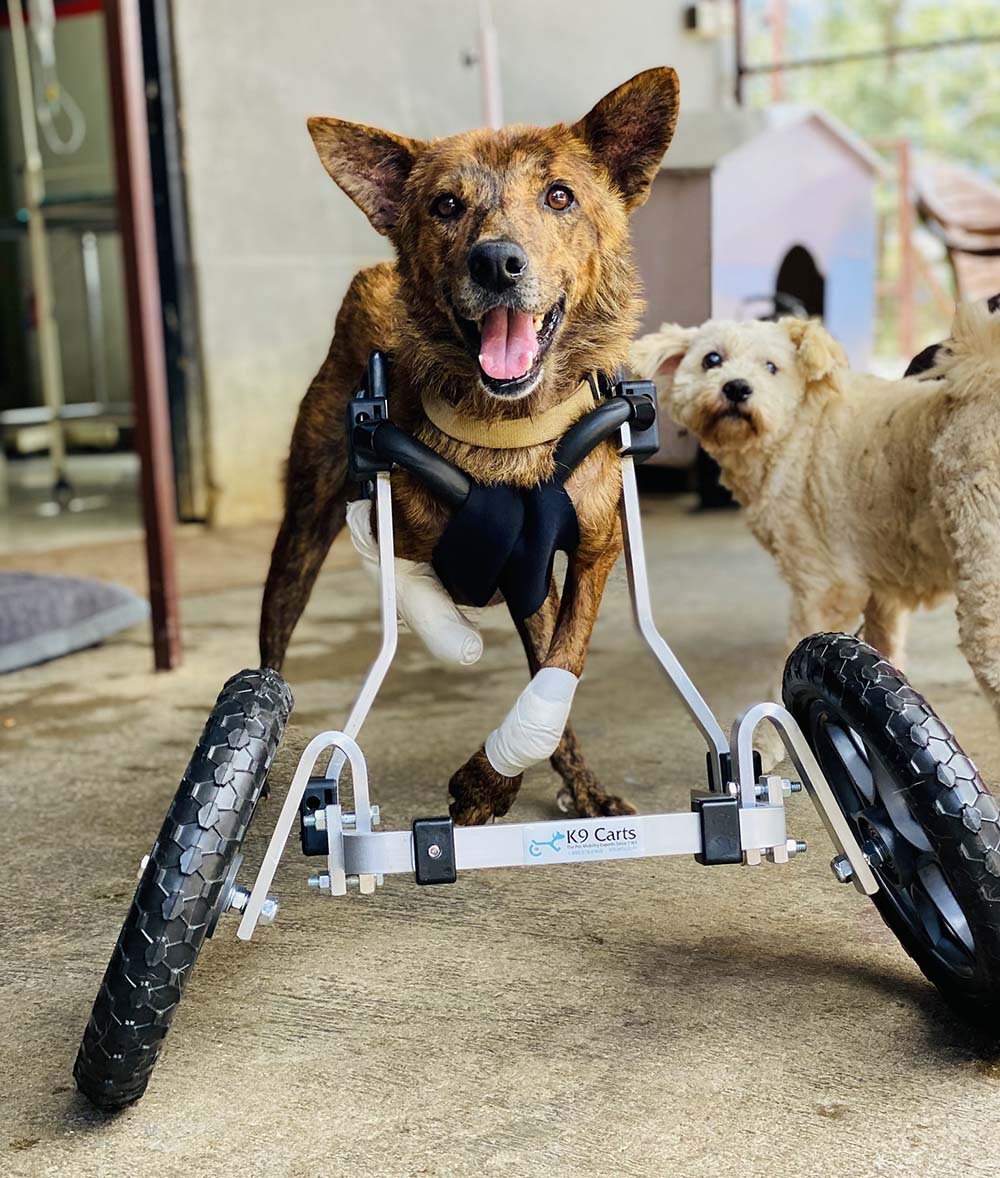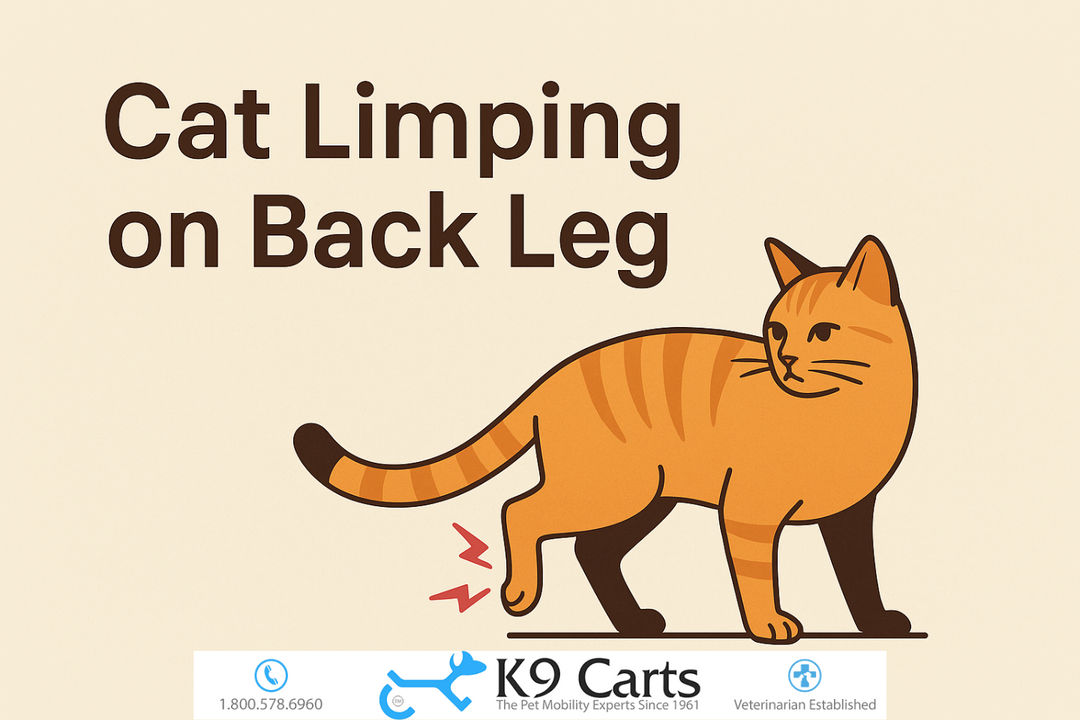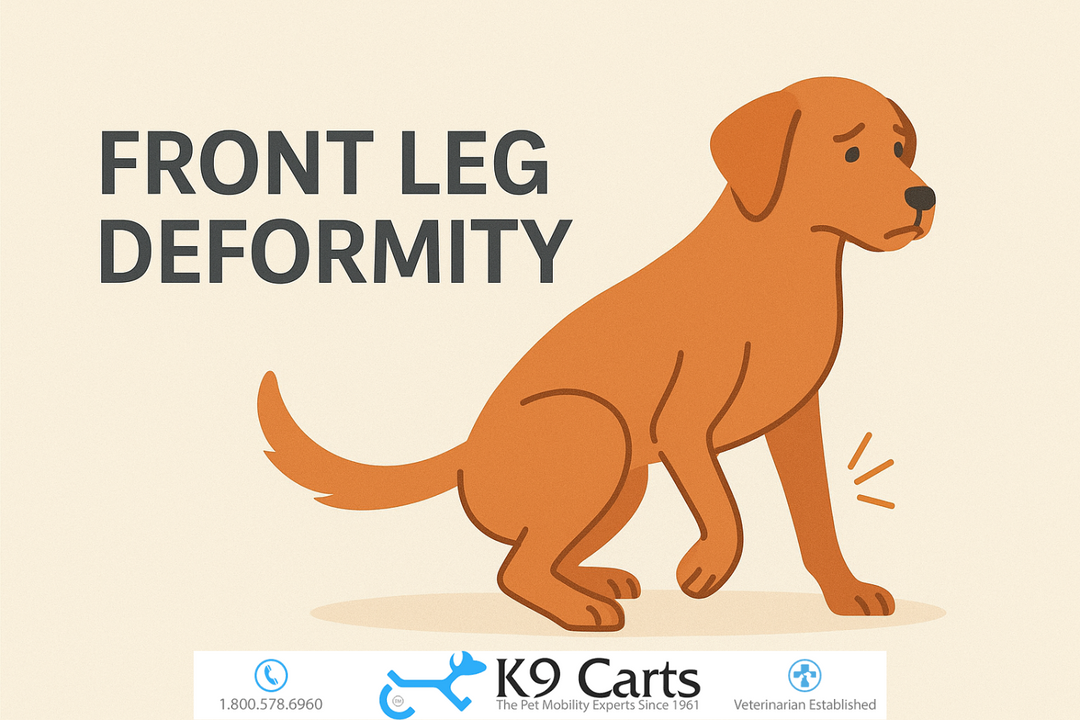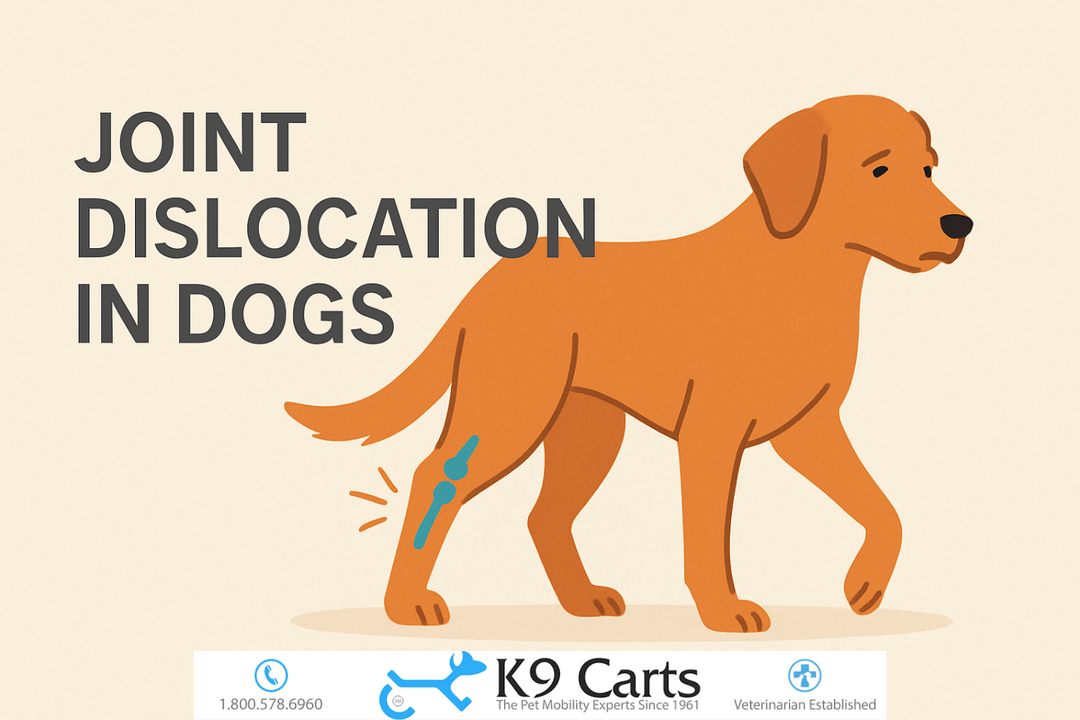Cat Limping on Back Leg: Common Causes and What to Do
It can be upsetting to see your cat suddenly start limping, especially if it’s one of their back legs. Some cats keep walking but clearly favor the leg. Others stop moving altogether. Whether the limp came on suddenly or developed over time, it’s important to figure out why it’s happening and what you can do to help.
In this article, we’ll explain the most common causes of limping in a cat’s back leg, how to tell if it’s an emergency, what treatment looks like, and when it might be time to consider long-term support like mobility aids.
Why is my cat limping on a back leg?
There are many reasons a cat may limp on one of their back legs. Some are mild and heal quickly. Others need medical care. Here are the most common causes to consider.
1. Minor injuries
Cats can injure themselves by jumping, landing wrong, slipping, or bumping into furniture. Strains and sprains in the muscles or joints are common, especially if the cat is older or less active than they used to be. These kinds of injuries usually cause a mild limp that improves with rest.
2. Cuts or foreign objects
Sometimes a limp starts after the cat steps on something sharp or gets a small wound on the paw or leg. Thorns, splinters, or glass can get stuck in the pads or between the toes. This kind of injury may cause the cat to lick the paw or avoid putting pressure on it.
3. Joint problems
Joint pain is one of the most common causes of limping in older cats. Arthritis in the hips, knees, or spine can make walking uncomfortable. Some younger cats can also develop joint issues due to genetics or injury. These issues often cause a slow, ongoing limp rather than a sudden one.
4. Broken bones
A break in the leg, foot, or hip will often lead to a clear, painful limp. In many cases, the cat won’t use the leg at all. There may be swelling, bruising, or a leg that looks out of place. Fractures always need veterinary attention.
5. Dislocated joints
A dislocation means the joint has popped out of its normal position. This can happen during rough play, a fall, or a hit by a car. The leg may hang at a strange angle. These injuries are very painful and require urgent treatment.
6. Infections and abscesses
Cats that go outside or live with other cats sometimes get bitten or scratched. These wounds can close over quickly and trap bacteria under the skin, forming an abscess. The area becomes swollen and painful. An abscess often feels warm to the touch and may leak pus.
7. Nerve problems
Sometimes the cause isn’t in the leg at all but in the nerves that control it. Spinal issues, slipped discs, or inflammation can cause weakness or partial paralysis in the back leg. The cat may not limp in the usual way but instead drag or stumble with that leg.
8. Blood clots
A serious condition called a saddle thrombus can cause sudden back leg problems. This happens when a blood clot blocks the arteries leading to one or both back legs. It causes extreme pain and usually affects both legs. If this happens, the cat needs emergency care right away.
9. Growths or tumors
In rare cases, a limp may be caused by a growth in the bone, muscle, or joint. These can cause pain, swelling, and reduced movement. A vet can help determine if this is the case.
How do I know if the limp is serious?
Some limps are mild and go away on their own. Others are more serious and need fast treatment. Here are signs that tell you the problem may be urgent:
Your cat won’t put any weight on the leg
The limp came on suddenly and is not getting better
The leg is swollen or looks different
Your cat cries, hisses, or hides when the leg is touched
Your cat is dragging the leg or stumbling
The paw is cold or pale
Your cat has trouble using both back legs
Your cat seems weak or stops eating
If you notice any of these signs, call your vet.
What can I do at home if my cat is limping?
If your cat is only slightly limping and seems otherwise okay, there are a few things you can do at home before going to the vet.
Keep them quiet and still
Limit their movement by keeping them in a small room or crate. Don’t let them jump or run. Let them rest for 24 to 48 hours to see if the limp improves.
Check the paw and leg
Look closely at the paw pads, between the toes, and all the way up the leg. Look for cuts, swelling, or anything stuck in the fur or skin. If you find something small like a splinter, you may be able to remove it gently with tweezers. If not, leave it for the vet.
Use a cold compress
If the area is swollen and your cat lets you touch it, wrap a cold pack in a towel and hold it against the leg for five minutes at a time. This can help with swelling and pain.
Monitor closely
If the limp doesn’t improve after two days of rest, or if it gets worse, it’s time to make a vet appointment.
When should I call the vet?
You should call your vet if:
The limp lasts longer than 48 hours
The pain is getting worse
You find swelling, heat, or an open wound
Your cat won’t let you touch the leg
The leg looks broken or out of place
There are signs of infection like pus or fever
Your cat shows signs of weakness or drags the leg
It’s always better to be safe and get a proper diagnosis.
How is a limping cat diagnosed by a vet?
At the vet, your cat will get a physical exam. The vet will watch how your cat walks, check for pain, and feel the leg and spine. Depending on what they find, they may suggest:
X-rays to look at bones and joints
Blood tests to check for infection or other problems
Ultrasound if soft tissue is involved
Nerve or spine testing if the cause isn’t in the leg
Finding the exact cause is key to treating it properly.
What treatments are available for a limping cat?
Treatment depends on the cause. Some common options include:
Rest and pain relief for minor injuries
Antibiotics and wound care for infections or abscesses
Surgery for fractures or dislocations
Anti-inflammatory medication for arthritis or joint problems
Long-term care plans for nerve or spine issues
Your vet will explain what’s best based on the diagnosis.
Can cats use wheelchairs or mobility aids?
Yes. Cats with back leg weakness or paralysis can benefit from mobility support, especially if the condition is long-term. Custom-built cat wheelchairs, like the ones we design at K9 Carts, help support the rear legs while allowing the cat to move freely using their front legs.
Each wheelchair is fitted to your cat’s size, shape, and condition. These devices can be used full-time or part-time, depending on what your cat needs. Many cats adjust quickly and continue to enjoy play, movement, and independence with the help of a properly fitted cart.
How can I support a cat with long-term leg issues?
If your cat’s limp becomes a chronic issue or they lose use of a back leg, there are ways to support them at home:
Provide soft bedding and limit jumping
Use ramps or steps to help them reach favorite spots
Place litter boxes on the same floor with low entry
Keep floors non-slippery
Feed a healthy diet to avoid extra weight on joints
Use a rear support harness or wheelchair for mobility
Over time, these small changes can make a big difference in your cat’s comfort and confidence.
What to remember if your cat is limping
Cats are good at hiding pain, so a limp may be the only clue something is wrong. If your cat suddenly starts limping on a back leg, don’t ignore it. Even if it’s minor, watching closely and acting early can help avoid bigger problems.
If the limp becomes more than just a small injury, or if your cat is dealing with a long-term condition like arthritis or paralysis, there are ways to keep them moving and happy. At K9 Carts, we’re here to help with custom wheelchairs made specifically for cats. Whether it’s for recovery or daily support, the right mobility aid can help your cat stay active and comfortable.
Let your vet guide you through the medical part, and when the time comes to talk about mobility support, we’re here to help with expert tools and experience.
References
https://pmc.ncbi.nlm.nih.gov/articles/PMC11148909/
https://pmc.ncbi.nlm.nih.gov/articles/PMC7736399/
https://pubmed.ncbi.nlm.nih.gov/34573448/
https://pubmed.ncbi.nlm.nih.gov/16649941/
https://pubmed.ncbi.nlm.nih.gov/30896333/




 He is completely comfortable in his cart now – and the transformation in his personality because he feels more like a “dog” is amazing.
He is completely comfortable in his cart now – and the transformation in his personality because he feels more like a “dog” is amazing. Wish to greatly thank you for building Truman’s wheelchair to custom fit him
Wish to greatly thank you for building Truman’s wheelchair to custom fit him About thirteen years ago, she was born with crippled back legs. I found her on a busy highway when she was about 3 months old.
About thirteen years ago, she was born with crippled back legs. I found her on a busy highway when she was about 3 months old. I rented a rear support wheelchair for my miniature dachshund about two weeks ago and I wanted to inform you that I wanted to rent for another two weeks.
I rented a rear support wheelchair for my miniature dachshund about two weeks ago and I wanted to inform you that I wanted to rent for another two weeks. He is completely comfortable in his cart now – and the transformation in his personality because he feels more like a “dog” is amazing.
He is completely comfortable in his cart now – and the transformation in his personality because he feels more like a “dog” is amazing. Wish to greatly thank you for building Truman’s wheelchair to custom fit him
Wish to greatly thank you for building Truman’s wheelchair to custom fit him About thirteen years ago, she was born with crippled back legs. I found her on a busy highway when she was about 3 months old.
About thirteen years ago, she was born with crippled back legs. I found her on a busy highway when she was about 3 months old. I rented a rear support wheelchair for my miniature dachshund about two weeks ago and I wanted to inform you that I wanted to rent for another two weeks.
I rented a rear support wheelchair for my miniature dachshund about two weeks ago and I wanted to inform you that I wanted to rent for another two weeks.